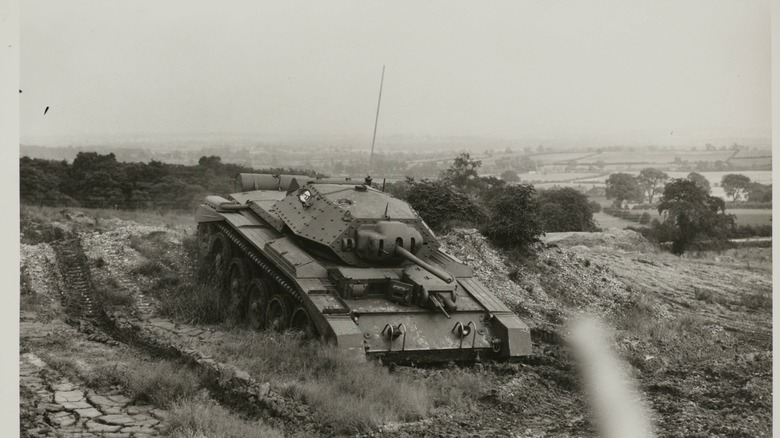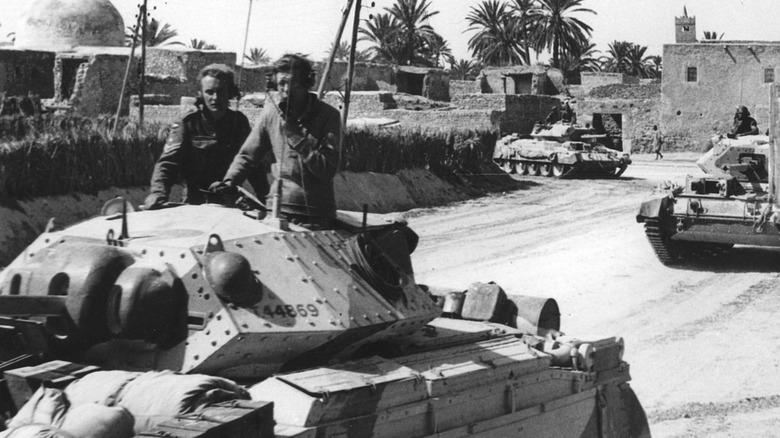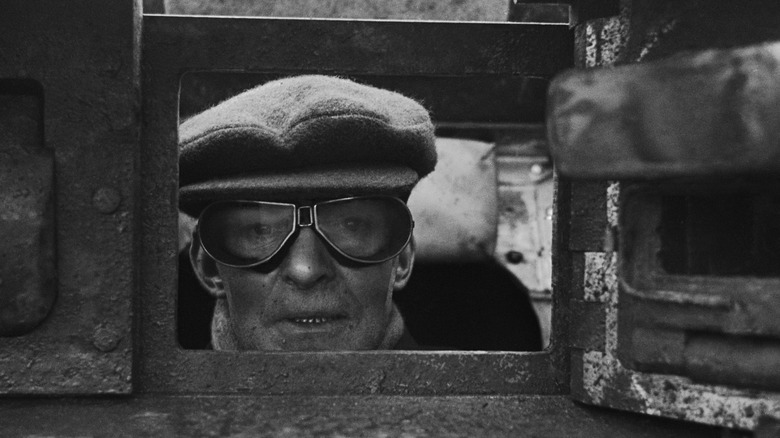One Of Britain's Best WWII Tanks Was Actually Pretty Unreliable
With the horrors of trench warfare in World War I, a specific need arose for a new kind of weapon, and the British were at the forefront of its creation. King's Liverpool Regiment soldier Thomas Brown reflected, in an Imperial War Museum podcast, that the earliest British tanks of the conflict were "very cumbersome things at first, with terrific caterpillar wheels ... they were able to get across the trench, and they'd crush the wires." By the time of World War II, tanks may have become rather less cumbersome, but even the best of them still had very notable shortcomings.
In just a couple of short decades, technological advances ensured that some weapons used in World War II were rather more sophisticated than those utilized during the 1914 to 1918 conflict. Tanks such as the long-lived US-made M3 Stuart were used in the war, as was the British Crusader.
Let's take a closer look at this potent World War II weapon, and exactly what made it stand out in battle (for better and for worse).
The shortcomings of the Crusader tank
Commanders potentially had, as a result of technological advancement, a wider range of vehicles at their disposal in World War II. This was reliant, of course, upon the right vehicles being designed, manufactured, and developed. As the scale of the conflict became apparent, it seemed that the priority was to field as many tanks as was feasible.
Author David Fletcher's "Crusader and Covenanter Cruiser Tanks 1939-1945" notes the Crusader was developed in the late 1930s alongside the Covenanter, and by 1941, it had arrived at one of the most challenging fronts of the conflict: North Africa. While some tank designs are centered around the concept of being huge, nigh-impenetrable objects, the Crusader's V12 Liberty offered more than 340 horsepower of output, which allowed this cruiser to zip around the battlefield.
As such, it was anticipated to be the perfect fit for covering long stretches of North African battlefields, and boasted the pace necessary to harry its opposition in the process. These qualities came at a cost, however. Unlike infantry tanks, they were very much exposed to anti-tank weaponry, and the initial Crusaders weren't heavily armed (they were equipped with two-pound guns).
The Crusaders' adaptations and legacy
The Crusader models were adjusted and improved upon as time went on. As Fletcher reported in an episode of The Tank Museum's Tank Chat on YouTube, the Mark III Crusader was fitted with a six-pound gun. Its heavier weaponry, however, had a profound effect on its operational abilities, as the gun had to be occupied by a crew member (leaving the rest with additional responsibilities).
The Crusader family struggled in the climate it had been dispatched to (there were questions among the British command about the advisability of doing so in the first place). The Mark III Crusader, short on space with its heavier weaponry, had air filters mounted on the outside, rendering them ineffectual. The engine's cooling system also wasn't very sophisticated and was unreliable.
Despite all of this, the Crusaders played a huge role in North Africa, contributing to the likes of Operation Battleaxe. Fletcher concluded that the Crusader was "quite a popular tank with its crews when it was in working order," and these seem to be the two crucial factors when considering its reputation. A fast and potentially formidable force on the battlefield, but also one that was limited by the nature of that very battlefield itself, its technological issues, and the Axis Powers' adaptations to counter it.


